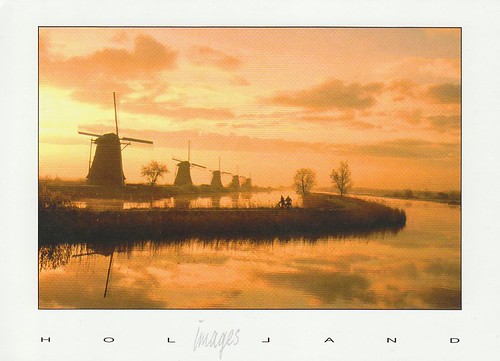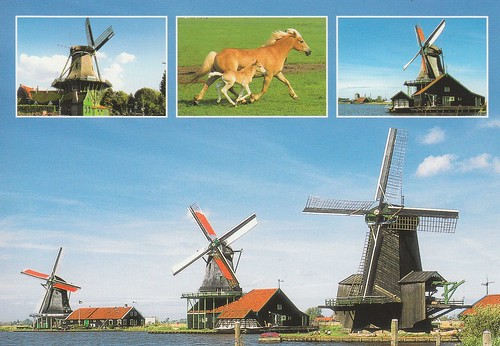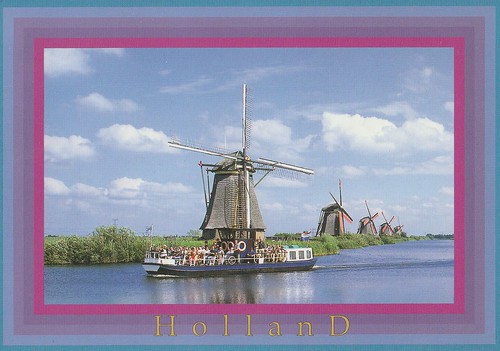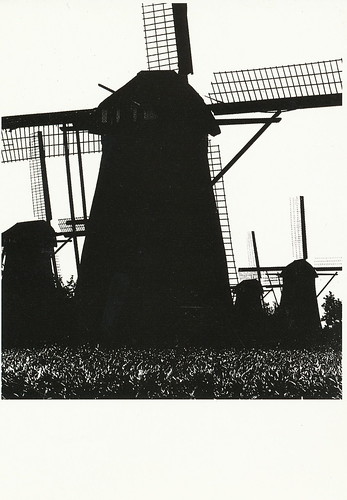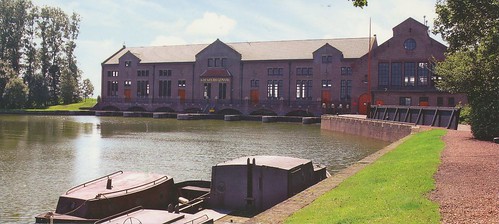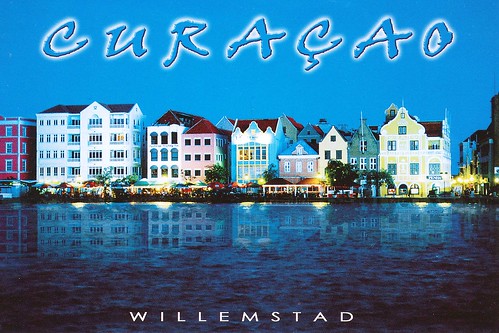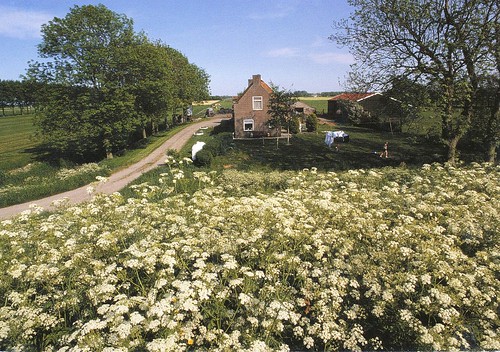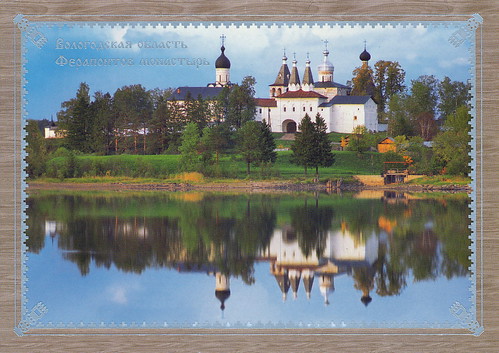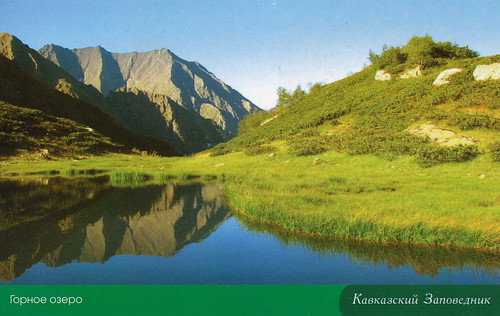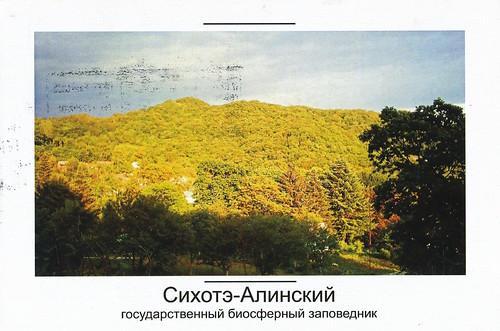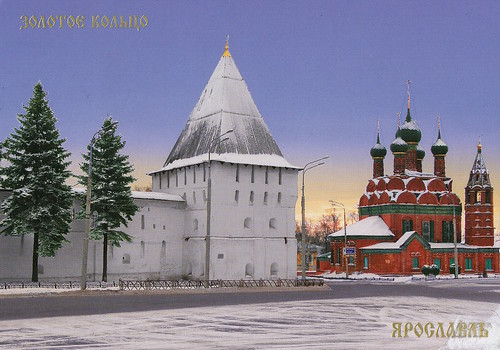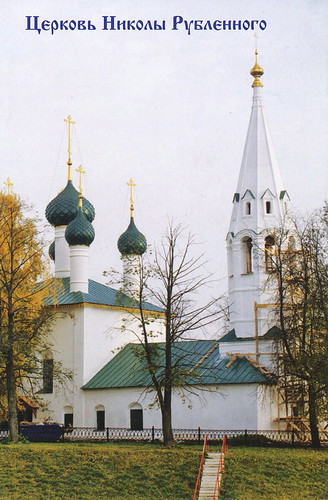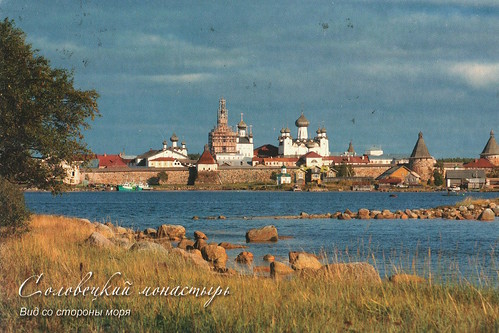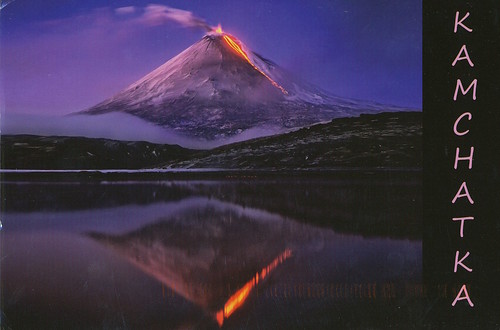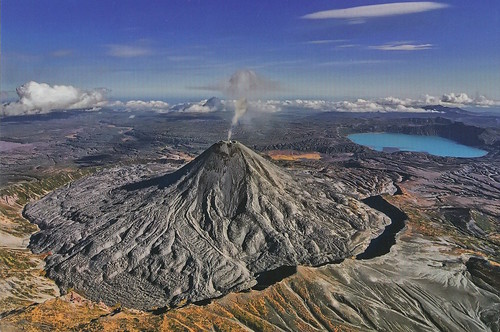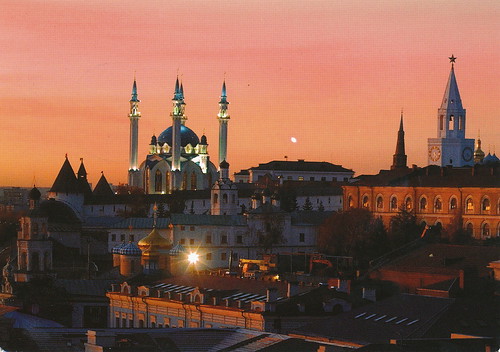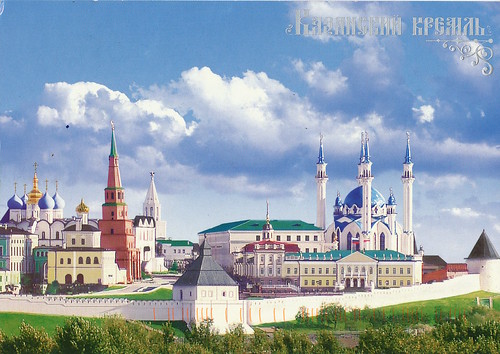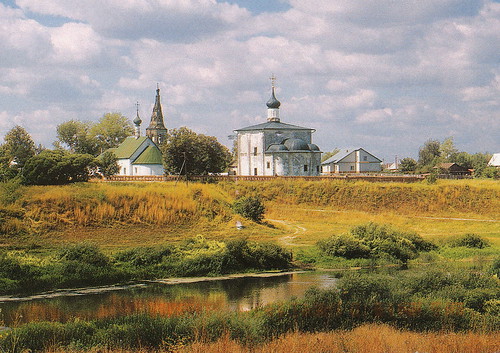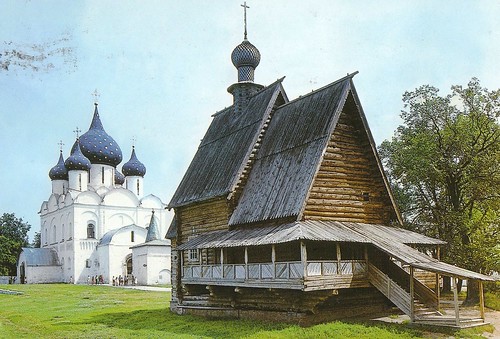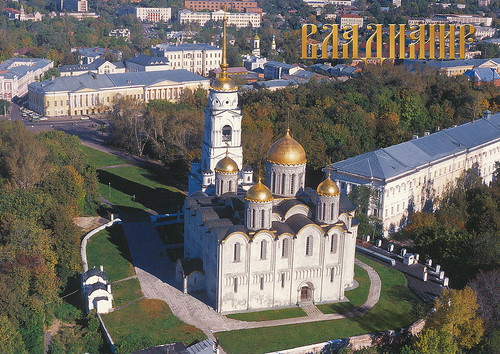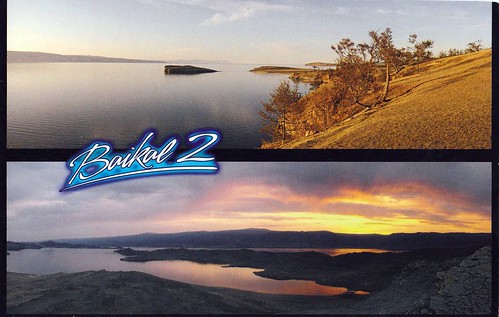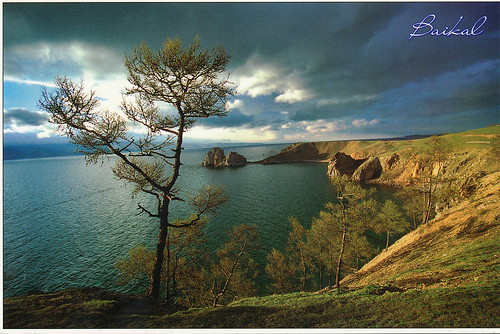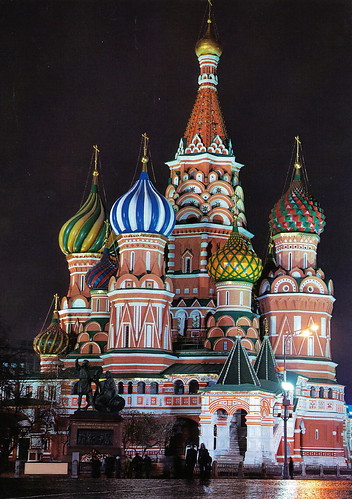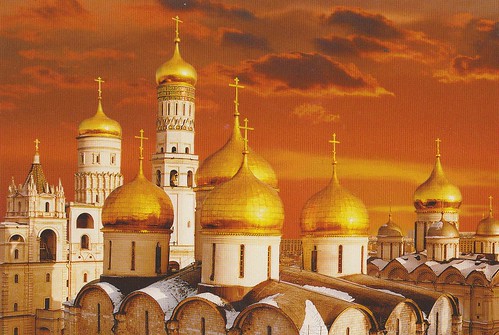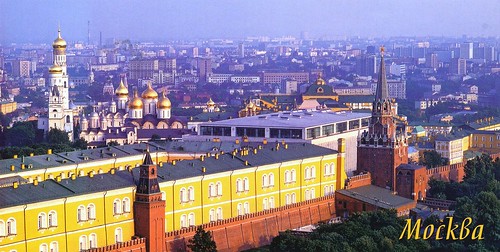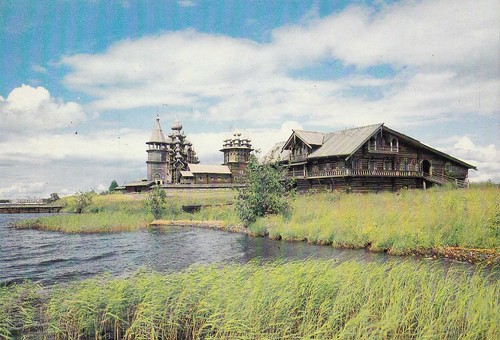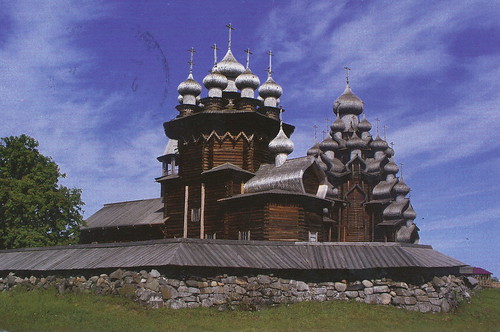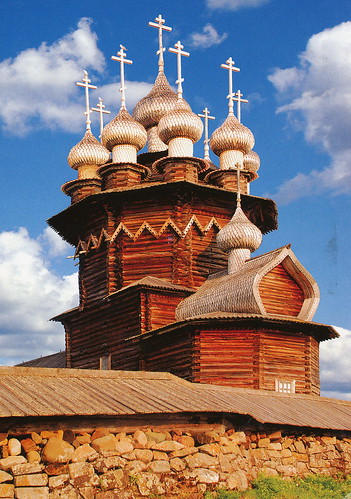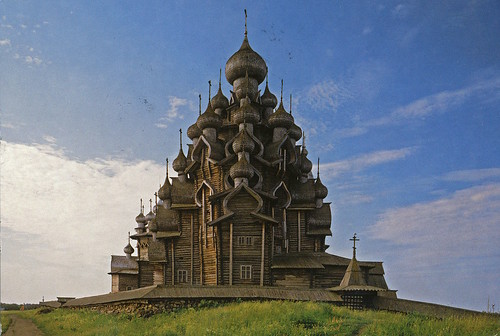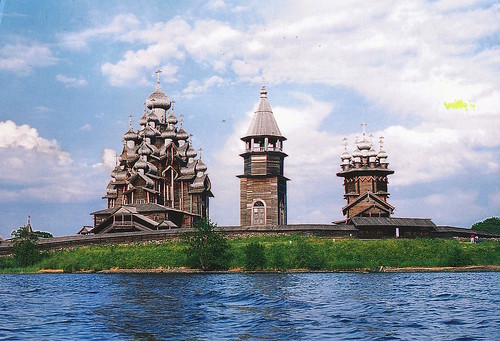The outstanding contribution made by the people of the Netherlands to the technology of handling water is admirably demonstrated by the installations in the Kinderdijk-Elshout area. Construction of hydraulic works for the drainage of land for agriculture and settlement began in the Middle Ages and have continued uninterruptedly to the present day. The site illustrates all the typical features associated with this technology – dykes, reservoirs, pumping stations, administrative buildings and a series of beautifully preserved windmills.
Date of Inscription: 1997
Postcard 1: januaryRR - 10 - Trickysticky
15/11/2011
14/11/2011
Netherlands - Ir.D.F. Woudagemaal (D.F. Wouda Steam Pumping Station)
The Wouda Pumping Station at Lemmer in the province of Friesland opened in 1920. It is the largest steam-pumping station ever built and is still in operation. It represents the high point of the contribution made by Netherlands engineers and architects in protecting their people and land against the natural forces of water.
Date of Inscription: 1998
Postcard 1: MarchRR - 30 - Annerie
Date of Inscription: 1998
Postcard 1: MarchRR - 30 - Annerie
13/11/2011
Netherlands - Historic Area of Willemstad, Inner City and Harbour, Curaçao
The people of the Netherlands established a trading settlement at a fine natural harbour on the Caribbean island of Curaçao in 1634. The town developed continuously over the following centuries. The modern town consists of several distinct historic districts whose architecture reflects not only European urban-planning concepts but also styles from the Netherlands and from the Spanish and Portuguese colonial towns with which Willemstad engaged in trade.
Date of Inscription: 1997
Date of Inscription: 1997
12/11/2011
Netherlands - Droogmakerij de Beemster (Beemster Polder)
The Beemster Polder, dating from the early 17th century, is is an exceptional example of reclaimed land in the Netherlands. It has preserved intact its well-ordered landscape of fields, roads, canals, dykes and settlements, laid out in accordance with classical and Renaissance planning principles.
Date of Inscription: 1999
Postcard 1: aprilRR - 18 - muldj01
Date of Inscription: 1999
Postcard 1: aprilRR - 18 - muldj01
11/11/2011
Netherlands - Defence Line of Amsterdam
Extending 135 km around the city of Amsterdam, this defence line (built between 1883 and 1920) is the only example of a fortification based on the principle of controlling the waters. Since the 16th century, the people of the Netherlands have used their expert knowledge of hydraulic engineering for defence purposes. The centre of the country was protected by a network of 45 armed forts, acting in concert with temporary flooding from polders and an intricate system of canals and locks.
Date of Inscription: 1996
Postcard 1: JanuaryRR - 61 - muldj01
Date of Inscription: 1996
Postcard 1: JanuaryRR - 61 - muldj01
10/11/2011
Russia - Ensemble of the Ferrapontov Monastery
The Ferapontov Monastery, in the Vologda region in northern Russia, is an exceptionally well-preserved and complete example of a Russian Orthodox monastic complex of the 15th-17th centuries, a period of great significance in the development of the unified Russian state and its culture. The architecture of the monastery is outstanding in its inventiveness and purity. The interior is graced by the magnificent wall paintings of Dionisy, the greatest Russian artist of the end of the 15th century.
Date of Inscription: 2000
Postcard 1: BIG UNESCO RR 8 from poncha
Date of Inscription: 2000
Postcard 1: BIG UNESCO RR 8 from poncha
Russia - Western Caucasus
The Western Caucasus, extending over 275,000 ha of the extreme western end of the Caucasus mountains and located 50 km north-east of the Black Sea, is one of the few large mountain areas of Europe that has not experienced significant human impact. Its subalpine and alpine pastures have only been grazed by wild animals, and its extensive tracts of undisturbed mountain forests, extending from the lowlands to the subalpine zone, are unique in Europe. The site has a great diversity of ecosystems, with important endemic plants and wildlife, and is the place of origin and reintroduction of the mountain subspecies of the European bison.
Date of Inscription: 1999
Postcard 1: Meet up RR 50B from raima
Date of Inscription: 1999
Postcard 1: Meet up RR 50B from raima
Russia - Central Sikhote-Alin
The Sikhote-Alin mountain range contains one the richest and most unusual temperate forests of the world. In this mixed zone between taiga and subtropics, southern species such as the tiger and Himalayan bear cohabit with northern species such as the brown bear and lynx. The site stretches from the peaks of Sikhote-Alin to the Sea of Japan and is important for the survival of many endangered species such as the Amur tiger.
Date of Inscription: 2001
Postcard 1: BIG UNESCO RR 9 from reddew
Date of Inscription: 2001
Postcard 1: BIG UNESCO RR 9 from reddew
Russia - Historical Centre of the City of Yaroslavl
Situated at the confluence of the Volga and Kotorosl Rivers some 250 km north-east of Moscow, the historic city of Yaroslavl developed into a major commercial centre from the 11th century. It is renowned for its numerous 17th-century churches and is an outstanding example of the urban planning reform Empress Catherine the Great ordered for the whole of Russia in 1763. While keeping some of its significant historic structures, the town was renovated in the neoclassical style on a radial urban master plan. It has also kept elements from the 16th century in the Spassky Monastery, one of the oldest in the Upper Volga region, built on the site of a pagan temple in the late 12th century but reconstructed over time.
Date of Inscription: 2005
Postcard 1: BIG UNESCO RR #9 from SixthSense
Date of Inscription: 2005
Postcard 1: BIG UNESCO RR #9 from SixthSense
Postcard 2: Unesco RR 135 from levirin
Russia - Cultural and Historic Ensemble of the Solovetsky Islands
The Solovetsky archipelago comprises six islands in the western part of the White Sea, covering 300 km2 . They have been inhabited since the 5th century B.C. and important traces of a human presence from as far back as the 5th millennium B.C. can be found there. The archipelago has been the site of fervent monastic activity since the 15th century, and there are several churches dating from the 16th to the 19th century.
Date of Inscription: 1992
further Informations: http://whc.unesco.org/en/list/632
Date of Inscription: 1992
further Informations: http://whc.unesco.org/en/list/632
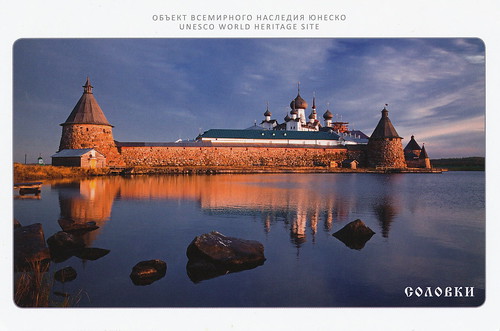 |
| AprilRR - annet013 |
Russia - Volcanoes of Kamchatka
This is one of the most outstanding volcanic regions in the world, with a high density of active volcanoes, a variety of types, and a wide range of related features. The six sites included in the serial designation group together the majority of volcanic features of the Kamchatka peninsula. The interplay of active volcanoes and glaciers forms a dynamic landscape of great beauty. The sites contain great species diversity, including the world's largest known variety of salmonoid fish and exceptional concentrations of sea otter, brown bear and Stellar's sea eagle.
Date of Inscription: 1996
Postcard 1: August RR - 5 - mad_madchen
Postcard 2: BIG UNESCO RR #31 - levirin
Russia - Historic and Architectural Complex of the Kazan Kremlin
Built on an ancient site, the Kazan Kremlin dates from the Muslim period of the Golden Horde and the Kazan Khanate. It was conquered by Ivan the Terrible in 1552 and became the Christian See of the Volga Land. The only surviving Tatar fortress in Russia and an important place of pilgrimage, the Kazan Kremlin consists of an outstanding group of historic buildings dating from the 16th to 19th centuries, integrating remains of earlier structures of the 10th to 16th centuries.
Date of Inscription: 2000
Postcard 1: BIG UNESCO RR 31 from nekarerina
Postcard 2: JulyRR from 32-mapache
Date of Inscription: 2000
Postcard 1: BIG UNESCO RR 31 from nekarerina
Russia - White Monuments of Vladimir and Suzdal
These two artistic centres in central Russia hold an important place in the country's architectural history. There are a number of magnificent 12th- and 13th-century public and religious buildings, above all the masterpieces of the Collegiate Church of St Demetrios and the Cathedral of the Assumption of the Virgin.
Date of Inscription: 1992
Postcard 1: Architectural Complex from the village of Kideksha, 12th -18th Century - rec from aknel via Unesco Tag - July 2011
Postcard 2: rec this card twice! januaryRR - 42 - mukaltin and Big Unesco RR #7 - poncha
Date of Inscription: 1992
Postcard 1: Architectural Complex from the village of Kideksha, 12th -18th Century - rec from aknel via Unesco Tag - July 2011
first from right: kizhi churches , middle one: voronet monastery, Romania (Churches of Moldavia)
Postcard 3: official Postcrossing card RU-520731
Russia - Virgin Komi Forests
The Virgin Komi Forests cover 3.28 million ha of tundra and mountain tundra in the Urals, as well as one of the most extensive areas of virgin boreal forest remaining in Europe. This vast area of conifers, aspens, birches, peat bogs, rivers and natural lakes has been monitored and studied for over 50 years. It provides valuable evidence of the natural processes affecting biodiversity in the taiga.
Year of Inscription: 1995
Postcard 1: Big Unesco RR #7 - siguanea
Year of Inscription: 1995
Postcard 1: Big Unesco RR #7 - siguanea
Russia - Putorana Plateau
This site coincides with the area of the Putoransky State Nature Reserve, and is located in the central part of the Putorana Plateau in northern Central Siberia. It is situated about 100 km north of the Arctic Circle. The part of the plateau inscribed on the World Heritage List harbours a complete set of subarctic and arctic ecosystems in an isolated mountain range, including pristine taiga, forest tundra, tundra and arctic desert systems, as well as untouched cold-water lake and river systems. A major reindeer migration route crosses the property, which represents an exceptional, large-scale and increasingly rare natural phenomenon.
Date of Inscription: 2010
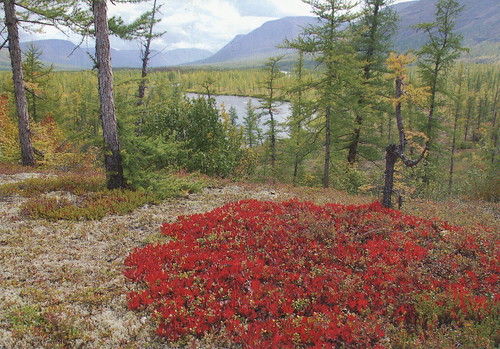 |
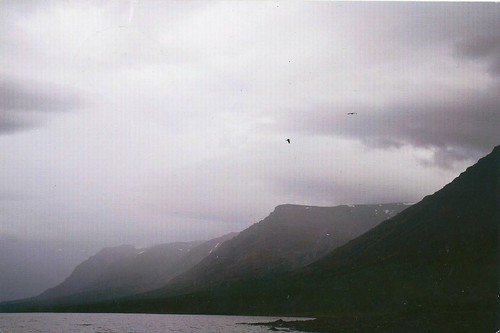 |
Russia - Lake Baikal
Situated in south-east Siberia, the 3.15-million-ha Lake Baikal is the oldest (25 million years) and deepest (1,700 m) lake in the world. It contains 20% of the world's total unfrozen freshwater reserve. Known as the 'Galapagos of Russia', its age and isolation have produced one of the world's richest and most unusual freshwater faunas, which is of exceptional value to evolutionary science.
Date of Inscription: 1996
Postcard 1: Switzerland to the rest of the world tag - received from ???
Postcard 2: JuneRR - 05 - mad_madchen
Russia - Kremlin and Red Square, Moscow
Inextricably linked to all the most important historical and political events in Russia since the 13th century, the Kremlin (built between the 14th and 17th centuries by outstanding Russian and foreign architects) was the residence of the Great Prince and also a religious centre. At the foot of its ramparts, on Red Square, St Basil's Basilica is one of the most beautiful Russian Orthodox monuments.
Date of Inscription: 1990
Postcard 1: Monthly RR from Marja
Postcard 2: Interior of the Terem Palace - juneRR - 62 - lemon_pie
Postcard 3: unwritten
Postcard 4: unwritten
Postcard 5: Panoramic RR from MZebra
Date of Inscription: 1990
Postcard 1: Monthly RR from Marja
Postcard 2: Interior of the Terem Palace - juneRR - 62 - lemon_pie
Postcard 3: unwritten
Postcard 4: unwritten
Postcard 5: Panoramic RR from MZebra
Russia - Kizhi Pogost
Lately i got tons of Kizhi Cards - so i've decided to scan this one first, even it's a long way to "R" and Russia ;). Btw: This one is Post #100! One Week, hundert postings - i won't be able to do that much updates in the coming days, but i will try to keep it updated as i got the cards.
The pogost of Kizhi (i.e. the Kizhi enclosure) is located on one of the many islands in Lake Onega, in Karelia. Two 18th-century wooden churches, and an octagonal clock tower, also in wood and built in 1862, can be seen there. These unusual constructions, in which carpenters created a bold visionary architecture, perpetuate an ancient model of parish space and are in harmony with the surrounding landscape.
Date of Inscription: 1990
Postcard 1: julyRR - 05 - mad_madchen
Postcard 2: BIG Unesco RR #6 - received from startinka
Postcard 3: Unesco tag bantik
Postcard 4: Unesco RR #37 from jenta
Postcard 6: official Postcrossing card RU-546055
The pogost of Kizhi (i.e. the Kizhi enclosure) is located on one of the many islands in Lake Onega, in Karelia. Two 18th-century wooden churches, and an octagonal clock tower, also in wood and built in 1862, can be seen there. These unusual constructions, in which carpenters created a bold visionary architecture, perpetuate an ancient model of parish space and are in harmony with the surrounding landscape.
Date of Inscription: 1990
Postcard 1: julyRR - 05 - mad_madchen
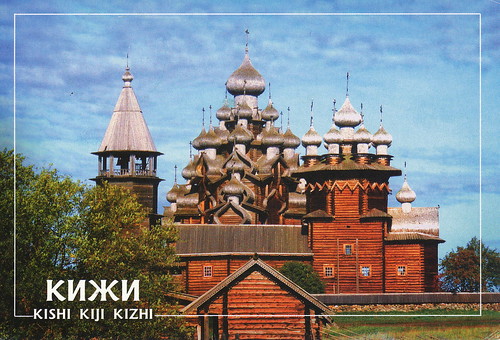 |
 |
| Kizhi Pogost Stamp issued in 2008 |
Postcard 2: BIG Unesco RR #6 - received from startinka
Postcard 4: Unesco RR #37 from jenta
Postcard 5: official Postcrossing Card RU-540341
Postcard 6: official Postcrossing card RU-546055
Subscribe to:
Posts (Atom)
